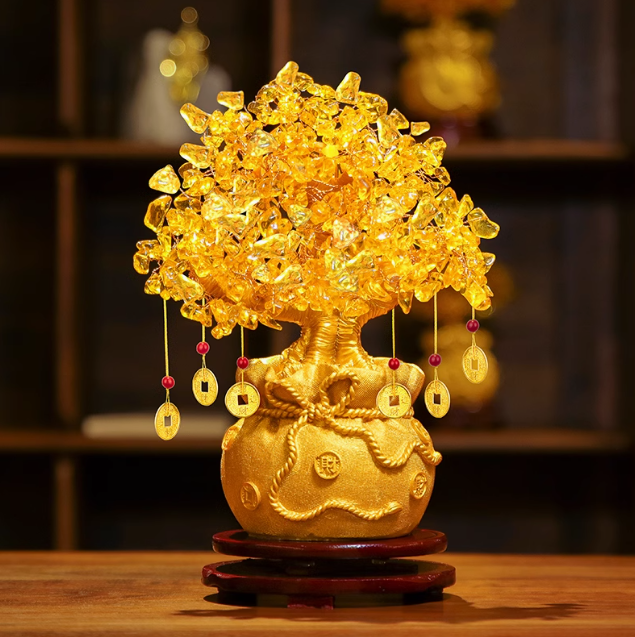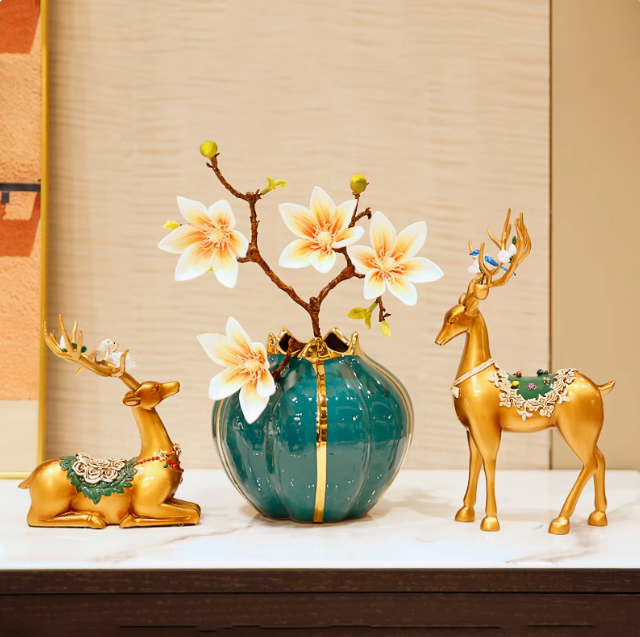홈 디자인의 심리학: 웰빙을 증진하는 공간 만들기
홈 장식 이는 단지 미학의 문제가 훨씬 넘는다. 우리가 공간을 디자인하고 배치하는 방식은 우리의 정신 건강, 감정, 전반적인 행복감에 깊은 영향을 미친다. 벽의 색상부터 가구 배치까지 모든 선택이 집 장식은 우리 뇌에 미묘한 신호를 보내 우리가 얼마나 편안하고, 집중하고, 즐거운 기분을 느끼는지에 영향을 미칩니다. 집 장식의 심리를 이해하면 정신 건강을 증진하는 공간을 만들어 일상의 스트레스와 삶의 어려움을 헤쳐나가는 안식처로 만들 수 있습니다. 의도적인 장식이 어떻게 홈 장식 웰빙을 향상시키는 방법
색채 심리학: 홈 디자인에서 색상이 감정에 미치는 영향
색상은 집안 장식에서 가장 강력한 도구 중 하나로, 즉각적인 감정 반응을 유발할 수 있습니다. 다양한 색상은 세로토닌(행복 호르몬)과 코르티솔(스트레스 호르몬)과 같은 신경전달물질의 생성에 영향을 미치므로, 색상 선택은 정신적으로 지지적인 공간을 만드는 데 있어 핵심적인 요소입니다.
부드러운 파랑과 녹색 계열은 진정 효과로 유명합니다. 하늘과 잎새와 같은 자연에서 영감을 받은 이 색상들은 혈압을 낮추고 불안을 줄여주기 때문에 침실과 거실에 이상적입니다. 집을 꾸미는데 있어 연한 파란색 포인트 벽이나 회색빛 녹색 방석은 하루를 마무리하고 싶게 하는 평온함을 전달할 수 있습니다. 연구에 따르면 파란색 톤이 적용된 공간은 스트레스 수준이 낮아지는 것으로 알려져 있으며, 휴식이 우선시되는 공간에 가장 적합합니다.
웜 뉘앙스(베이지, 부드러운 그레이, 웜 화이트)는 집안 인테리어에 있어 다용도로 활용할 수 있는 기반 색상입니다. 이러한 색상은 안정감과 편안함을 연출해주며 과도한 자극을 막는 '정신적 리셋' 역할을 합니다. 주방이나 집무실과 같이 활동량이 많고 균형 잡힌 분위기가 중요한 공간에서 특히 잘 어울립니다. 중성적인 색조를 띤 니트 블랭킷이나 짠 러그처럼 질감을 더해준다면 감각을 자극하지 않으면서도 포근한 공간감을 연출할 수 있습니다.
전략적인 포인트 컬러 활용 (노랑, 테라코타, 부드러운 오렌지): 절제된 사용이 전제될 경우 에너지와 창의성을 북돋워 줍니다. 식탁 위 노란 꽃병이나 서재의 테라코타 화분은 스트레스 유발 없이 따뜻한 분위기를 더해주며 동기부여가 필요한 공간의 인테리어 디자인에 효과적입니다. 하지만 밝은 색상을 과도하게 사용할 경우 오히려 불안감을 증폭시킬 수 있으므로 균형 잡힌 구성이 중요합니다.
조명: 집안 인테리어를 통한 웰빙 조명
조명은 집안 인테리어의 기초 요소로, 생체 리듬과 감정 상태, 인지 기능에 직접적인 영향을 미칩니다. 조명이 부족하면 피로와 눈의 피로감, 우울증까지 유발할 수 있지만, 의도적으로 설계된 조명은 각성 상태와 이완, 그리고 더 나은 수면을 도울 수 있습니다.
자연광은 정신 건강 측면에서 집안 인테리어에 있어 대체 불가능한 요소입니다. 햇빛 노출은 비타민 D 생성을 늘리고 기분 안정에 중요한 세로토닌 수치를 조절해 줍니다. 큰 창문이나 sheer 커튼, 반사 표면(빛을 반사함) 등을 활용해 자연광을 극대화하면 계절성 우울증(SAD) 증상을 완화시키고 전반적인 낙관성을 높이는 데 도움이 됩니다. 집안 인테리어에서 창문을 가리지 않도록 가구를 배치하는 것도 중요합니다. 예를 들어 소파를 창문 앞에 두는 대신, 창문에 직각으로 배치하면 공간이 밝고 개방적으로 느껴지게 할 수 있습니다.
계층화된 인공 조명은 다양한 시간과 활동에 따른 다양한 요구를 충족시킵니다. 주변 조명(천장 조명기구, 매립등)은 전체적인 밝기를 제공하고, 작업 조명(탁상용 램프, 캐비닛 하부 조명)은 업무나 요리 공간에서 집중력을 돕습니다. 액센트 조명(스트링 라이트, 탁상 조명)은 휴식을 취하는 데 따뜻한 분위기를 연출합니다. 이러한 계층화된 조명 방식은 단일 광원의 가혹함을 피하여 눈의 피로와 짜증을 유발할 수 있는 문제를 줄여줍니다.
따뜻한 빛과 차가운 빛의 선택도 중요합니다. 따뜻한 백색 전구(2700–3000K)는 노을빛을 모방하여 편안함을 유도하므로 침실과 거실에 적합합니다. 반면, 차가운 백색 전구(4000–5000K)는 낮은 햇빛을 닮아 집중력을 높여주므로 홈오피스나 주방에 어울립니다. 홈 장식 광원 온도를 공간의 기능과 일치시켜 신체 내부 시계를 조절함으로써 수면 개선과 낮 동안의 활력 증진에 도움을 줍니다.

공간과 혼잡: 홈 인테리어가 스트레스에 미치는 영향
공간의 배치와 구성은 집 꾸미기의 핵심 요소로서 스트레스 수준에 직접적인 영향을 미칩니다. 복잡하고 어지러운 환경은 뇌를 압도하게 되며 '싸우거나 도망가야 한다'는 반응을 유발하는 반면, 정돈되고 의도적으로 꾸며진 공간은 통제감과 안정감을 줍니다.
명확한 구역이 설정된 개방형 평면 배치는 주택 인테리어에서 균형 잡힌 접근법입니다. 개방형 구조는 연결성과 공간의 넓어 보임을 느끼게 하여 갇혀 있는 듯한 느낌을 줄여줍니다. 하지만 명확한 구역(예: 식사 공간과 거실 공간의 구분)이 없다면 뇌가 공간을 처리하기 어려워하며 이로 인해 미묘한 불안감이 유발될 수 있습니다. 이러한 경우, 공간을 구획화하는 데에는 러그, 책장 또는 가구 활용이 효과적이며, 이는 집 꾸미기에 있어 중요한 전략으로, 뇌가 공간의 목적을 인식할 수 있도록 도와 관리 가능한 느낌을 줍니다.
정돈된 표면은 정신적 명료함에 필수적입니다. 연구에 따르면 우리가 의식적으로 인식하지 못하더라도 시각적 난잡함은 코르티솔 수치를 증가시킵니다. 내장 수납장, 장식용 바구니 또는 벽걸이 선반과 같은 홈 인테리어 전략을 활용하면 의미 있는 물건을 전시하면서도 표면을 깔끔하게 유지할 수 있습니다. 새로운 물건을 추가할 때 기존 물건을 제거하는 '하나를 들여오면 하나를 내보내는(one in, one out)' 규칙은 물건이 쌓이는 것을 방지하여 인테리어를 의도적인 상태로 유지하도록 도와줍니다.
개인 공간은 웰빙을 위한 홈 인테리어에 매우 중요합니다. 개방형 구조에서도 작은 폐쇄적인 공간을 만드는 것이 도움이 됩니다. 예를 들어, 쿠션을 놓은 창문 좌석, 천막이 있는 독서 공간, 파티션으로 구획된 홈 오피스 등이 있습니다. 이러한 공간은 고요함을 느끼고 정신적 재충전을 할 수 있게 하며, 개방된 공간의 사회적 에너지와 균형을 유지하도록 도와줍니다.
자연과 연결: 자연친화형 홈 인테리어
인간은 본래 자연과 연결되기를 원하는 욕구를 가지고 있으며, 이를 '바이오필리아(biophilia)'라고 부른다. 자연 요소를 도입한 집안 인테리어는 이러한 욕구를 해소해주며, 스트레스를 줄이고 활력을 느끼게 하는 데 도움을 준다.
실내 식물은 바이오필리아 인테리어의 핵심이다. 색상을 더해주는 것을 넘어 식물은 공기질을 개선시키고 성장과 생명력에 대한 감각을 불러일으킨다. 연구에 따르면 식물을 돌보는 행위는 불안감을 줄여주며, 식물 자체의 존재만으로도 혈압을 낮추는 효과가 있다. 책상 위의 다육식물이나 선반에서 늘어나 내려오는 만년청 같은 작은 식물조차도 큰 영향을 미친다. 손재주가 없는 사람이라면 고급스럽고 사실적인 인조 식물을 사용해도 시각적 안정감을 얻을 수 있지만, 공기 정화 효과는 기대할 수 없다.
자연 소재를 활용한 집안 인테리어—나무, 돌, 줄타이사, 면은 안정감을 느끼게 합니다. 나무 식탁, 돌 벽난로 주변 마감, 또는 줄타이사 재질의 러그는 공간을 자연과 연결해 주며, 안전하고 단순함에 대한 긍정적인 연상을 유발합니다. 이러한 소재들은 또한 시간이 지나면서도 우아하게 노화되며, 개성을 더하는 녹슨 표면(패티나)을 형성하는데, 인간의 두뇌는 이를 '살아 숨쉬는' 따뜻한 분위기로 받아들입니다.
자연에서 영감을 받은 예술 작품은 친자연적 인테리어 디자인을 확장시킵니다. 숲, 바다 풍경, 혹은 식물 도해가 들어간 포스터는 특히 자연광이 제한된 공간에서도 실내에 자연을 들여놓는 효과를 줍니다. 사람의 뇌는 실제 자연을 볼 때처럼 이러한 이미지에 반응하며 스트레스를 줄이고 기분을 개선시킵니다. 개인적인 감성을 더하기 위해 추억이 깃든 장소(동년 시절의 정원이나 여행지에서 딴) 꽃이나 낙엽을 눌러 액자에 담는 것도 자연 요소와 향수를 동시에 불러일으키는 방법입니다.
개성화: 집안 인테리어는 정체성과 소속감의 표현
개인의 정체성을 반영하는 공간—즉, 인테리어를 통해—소속감을 키우고, 이는 웰빙의 핵심 요소입니다. 주변 환경이 우리 이야기를 말해줄 때 우리는 인정받고 안전하다는 느낌을 갖게 됩니다.
집안의 의미 있는 소품들은 감정적인 중심지 역할을 합니다. 가족 사진, 여행 기념품, 손수 만든 선물 혹은 대대로 물려받은 유물과 같은 것들은 사랑하는 사람들과 소중한 추억과 연결되어 있으며, 행복감과 지속성에 대한 감정을 불러일으킵니다. 갤러리 벽이나 벽난로 위, 선반 등에 의도적으로 전시함으로써 집이 단순한 '주거공간'에서 '집'이 되는 계기가 됩니다. 우리의 뇌가 그 공간을 자신만의 것으로 인식하기 때문입니다.
창의적인 표현은 인테리어를 통해 자존감을 높이는 데 기여합니다. 벽화 그리기, 소장품 진열하기 또는 가구 리폼하기와 같은 창조적 행위는 자기표현의 기회가 되며 능력감을 강화시켜 줍니다. 작은 DIY 프로젝트라 하더라도—예를 들어 손으로 그린 화분이나 뜨개질로 만든 담요 같은 것들—공간에 개성을 불어넣어 우리가 누구인지에 대해 더 생생하게 느끼게 하며, 공간을 더욱 살아 숨 쉬는 곳으로 만들어 줍니다.
자주 묻는 질문: 집 꾸미기 심리학
집을 어떻게 꾸미면 불안감을 줄일 수 있나요?
차분한 색상(파란색, 초록색 계열), 정돈된 표면, 자연 요소(식물, 나무)를 중심으로 꾸며보세요. 부드러운 조명(탁상용 램프, 줄조명)을 더하고 휴식을 취할 수 있는 개인 공간을 마련해 보세요. 이러한 선택은 뇌에 안정감을 전달하여 스트레스 반응을 줄이는 데 도움이 됩니다.
집 꾸미기가 수면의 질을 개선할 수 있나요?
네. 침실에서는 따뜻하고 부드러운 조명(형광등 같은 강한 조명은 피하세요)과 시원한 색상(네이비, 세이지 그린 등)을 사용해 수면을 유도하세요. 전자기기는 제거하거나 닫힌 수납공간에 숨기고, 부드러운 질감의 소재(린넨 시트, 고급스러운 러그)로 편안함을 더해보세요.
집무실 인테리어가 업무 효율성에 어떤 영향을 미치나요?
밝은 자연광은 집중력을 높여주고, 집업 조명은 눈의 피로를 방지합니다. 중성적인 색상에 초록색이나 노란색 포인트를 주면 산만함 없이 동기부여에 도움이 됩니다. 정돈된 책상과 인체공학적 가구는 스트레스를 줄여주며, 개인적인 소품(식물, 가족 사진 등)을 두면 고립감을 막을 수 있습니다.
정신 건강 측면에서 볼 때 '최고'의 인테리어 스타일이 있을까요?
아니요—정신 건강은 개인마다 다릅니다. 핵심은 자신의 필요에 맞추는 것입니다: 외향적인 사람은 개방적이고 화사한 공간에서 잘 적응할 수 있지만, 내향적인 사람은 따뜻하고 차분한 공간을 선호할 수 있습니다. 중요한 것은 집의 인테리어가 자신의 성격을 반영하고 일상 리듬을 지원해주는 것입니다.
소형 거주 공간은 어떻게 인테리어를 활용하여 웰빙을 향상시킬 수 있나요?
공간을 넓어 보이게 하기 위해 밝은 색상과 거울을 사용하세요. 다기능 가구(수납 기능이 있는 의자, 접이식 책상 등)로 혼잡함을 줄일 수 있습니다. 수직으로 식물을 배치하면(예: 페페로미아, 산세베리아) 바닥 공간을 차지하지 않고 자연의 느낌을 더할 수 있으며, 쿠션 등을 활용한 작은 휴식 공간('마이크로 루프')을 만들어 자신만의 은신처를 만드세요.
